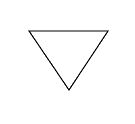

| Hubble Space Telescope Primer for Cycle 11 | |||
|
|
6.2 HST Visits
6.2.1 When is a New Visit Required?
A new visit is required whenever a new set of guide stars must be acquired. This is the case in any of the following situations:
- A change in target position of more than 2 arcmin. Note that Solar-system objects that move more than 2 arcmin during the observations may not necessarily require a new visit (see Section 5.3).
- Repeated, periodic, or other time-separated observations with an interval between exposures that would yield one or more empty visibility periods in the visit (which is not allowed).
- A change in spacecraft roll orientation (e.g., for NICMOS coronographic observations, or for STIS long-slit spectra along different position angles on the sky).
- A change in primary instrument (e.g., from WFPC2 to STIS). However, coordinated parallel observations with one or more other SIs in addition to the primary SI do not require a new visit.
6.2.2 Maximum Duration of a Visit
Because of scheduling interactions with the SAA, longer visits are much more difficult to schedule, and they tend to require scheduling in SAA-free orbits (see Section 2.3.2).

Consequently, any visit that exceeds 5 orbits must be broken into separate, smaller visits.
If you feel that this limit would severely affect the scientific return of your program, then please contact the STScI Help Desk (see Section 1.3).
Finally, for health and safety reasons, the STIS MAMAs cannot be operated in or around SAA passages, so the five orbit duration limit is strictly enforced on such visits. The ACS/SBC has the same five orbit maximum duration.
6.2.3 Instrument Specific Limitations on Visits
For all SIs except WFPC2, there are SI specific restrictions on the definition of a visit.
ACS: Data Volume Constraints
If ACS data is taken at the highest possible rate for long periods of time, it is possible to accumulate data faster than it can be transmitted to the ground. High data volume proposals will be reviewed and on some occasions, users may be requested to break the proposal into different visits or consider using sub-arrays. Users can achieve higher frame rates by using subarrays, at the expense of having a smaller field of view; see the ACS Instrument Handbook for details.
FGS: Astrometry
For astrometric observations using FGS1R, each individual set (consisting of target object and reference objects) may be contained in one visit if there is no telescope motion made during the sequence.
NICMOS: Coronography
We anticipate that most NICMOS coronographic observations will be single visits using the full orbit for science observations. Analysis of past NICMOS data has shown that there could be some advantage (i.e., a cleaner PSF subtraction under some circumstances) when obtaining two images of the same target within the same orbit with a roll of the telescope between observations. Executing this roll will require several minutes, including acquisition of new guide stars and the re-acquisition of the target.
Proposals requesting two NICMOS onboard acquisitions (ACQs) in the same orbit will have the following requirements:
- Each ACQ and its corresponding science exposures must be scheduled as a separate visit.
- Each visit must not exceed 22 minutes, including guide star acquisition, ACQ, exposure time and overhead.
- No more than two ACQs within one orbit will be allowed.
The effectiveness of the roll-within-an-orbit technique has been shown to depend heavily on the attitudes of the telescope preceding the coronographic observation. Thus, using the technique is not a guarantee of cleaner PSF subtraction.
As an extra insurance policy, observers may want to consider adding an extra orbit for each new pointing. Thermal changes in the telescope are likely to be significantly smaller in the second and subsequent orbits on a target than they are in the first orbit.
NICMOS coronographic observations requiring particular telescope orientations (e.g., positioning a companion or disk between diffraction spikes) are time-critical and must be described in the 'Special Requirements' section of a Phase I proposal (see Section 8.17 of the Call for Proposals).
STScI will provide standard calibration reference files, flat fields and darks, which will be available for calibration purposes. Contemporary reference files in support of NICMOS observations are not solicited or normally approved for GO programs, but coronographic observers who can justify the need for contemporary calibration observations must include the additional orbit request in the Phase I proposal. Acquisition of bright targets for which an ACQ will not be feasible requires the observer to obtain flat field observations to locate the coronographic hole. This implies adding one or more orbit to the total time requested. All calibration data regardless of the program are automatically made public.
STIS: CCD and MAMA Observations in the Same Visit
In general, STIS programs that contain both CCD and MAMA science observations (excluding target acquisitions) must be split into separate CCD and MAMA visits. Exceptions to this rule may be allowed if one of the following two conditions is met:
- There is less than 30 minutes of science observing time (including overheads and target acquisition) using the CCD at a single target position.
- The target is observed for only one orbit.
If you believe your science requires CCD and MAMA science exposures in the same visit (e.g., for variability monitoring programs), you must explain this in the Special Requirements section of a Phase I Proposal.
|
Space Telescope Science Institute http://www.stsci.edu Voice: (410) 338-1082 help@stsci.edu |